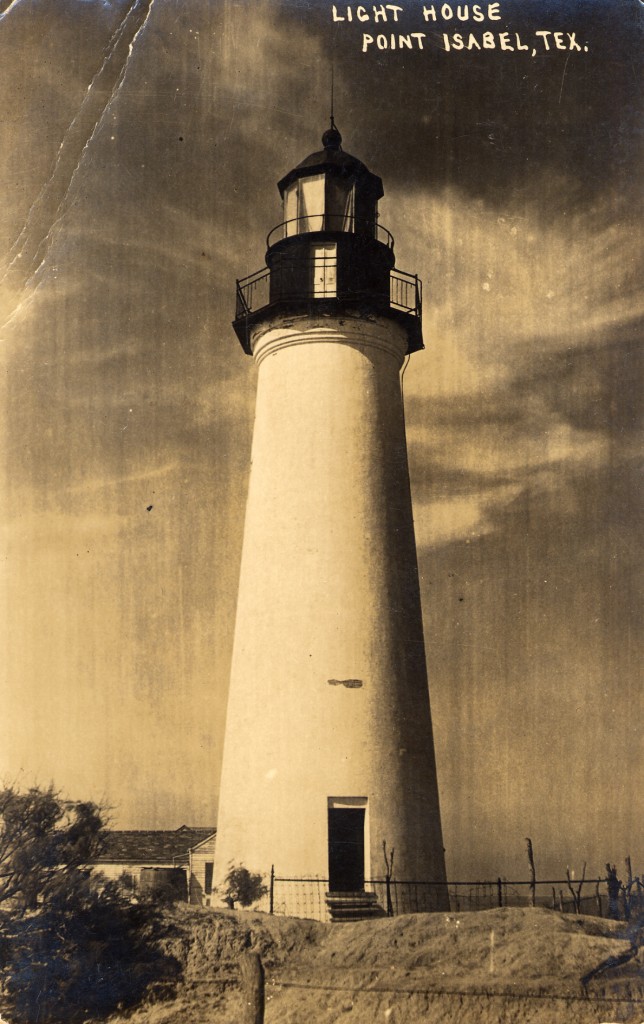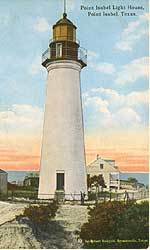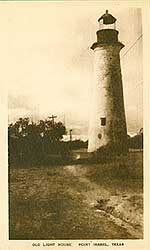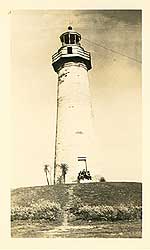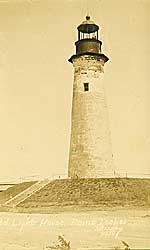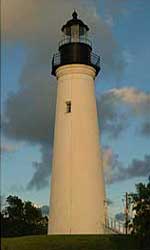The PORT ISABEL has long been a dominant feature at the southern tip of the Texas Gulf Coast. Its heavy brick walls have withstood the elements for well more than a century, and its light has aided many a seafarer.
THE REGION
Spaniards discovered and mapped the Gulf shores peopled by the coastal Borrado Indians, in the early 1500s. Some two centuries later, ranchers from Mexico settled in what became south Texas. By the 1830s the small settlement of El Fronton de Santa Isabela became headquarters for one of the large ranches established by these settlers.
U.S. – MEXICAN WAR
In 1846, the United States military moved into the area under the leadership of General Zachary Taylor when animosity between the U. S. and Mexico intensified. This gave south Texas national attention for the first time. Early battles in the Mexican-American War took place at Palo Alto and Resaca de la Palma, north of today’s Brownsville. Serving as a supply depot, Point Isabel received wounded soldiers from these conflicts.
U.S. CIVIL WAR
During the American Civil War, Confederate troops controlled the area, but Union Troops blocked transportation to the Confederacy and took control in 1863. Both forces used the lighthouse for an observation post. At nearby Palmito Ranch, Union and Confederate forces dashed more than a month after General Robert E. Lee surrendered at Appomattox.
AFTER THE WAR
After the war the lighthouse and its beacon were repaired and re-lighted to guide commercial vessels to southernmost Texas. At the turn of the century, when shipping traffic declined, the lighthouse was abandoned. Even though coastal defense was crucial during the World Wars, the tower at Point Isabel stood a dark watch.
In 1866 the lighthouse was repaired and relit. For the next two decades its beacon guided large numbers of commercial vessels to southernmost Texas. The light was extinguished between 1888 and 1894 during negotiations over ownership of the site; when finally reactivated, its years of service were numbered.
LIGHTHOUSE DECOMMISSIONED
The lighthouse was abandoned permanently in 1905 after shipping traffic declined. And although the coast was later active with defense measures during the two world wars, the tower at Point Isabel stood a dark watch.
CARING FOR THE LIGHTHOUSE
Mr. and Mrs. Lon C. Hill, Jr. and the Port Isabel Realty Company donated the lighthouse to the State of Texas a historic site in 1950. The tower was remodeled and the iron platform replaced with concrete and the glass dome was raised to provide easier access for visitors. In 1952, the lighthouse was officially open to the public as a tourist attraction.
PRESENT DAY
In 2022, the lantern room in the lighthouse was fitted with a 3rd Order reproduction Fresnel lens, and the lens lit as a historical interpretation of the lighthouse as a navigational aid.
Of sixteen lighthouses constructed along the Texas coast, the Port Isabel lighthouse is the only one open for visitors to enjoy. It is operated by the City of Port Isabel in partnership with the Texas Historical Commission.
RESOURCES
Book: ”Lighthouses of Texas”, T. Lindsay Baker (1991 & 2001)
Booklet: “Old Point Isabel Lighthouse Beacon of Brazos Santiago, and Padre Island”, Verna Jackson McKenna (1956)
Book: “Lighthouse, Lightships, and the Gulf of Mexico”, David L. Cipra (1997)
General Lighthouse history: https://uslhs.org/history
United States Lighthouse Society:
William Egly (Light Keeper) https://archives.uslhs.org/people/william-egly
United States Coast Guard:
Mrs. Hannah Ham (Female Lighthouse Keeper) https://www.history.uscg.mil/Browse-by-Topic/Notable-People/Women/Women-Lighthouse-Keepers/
Lighthouse Friends: https://www.lighthousefriends.com/light.asp?ID=159

